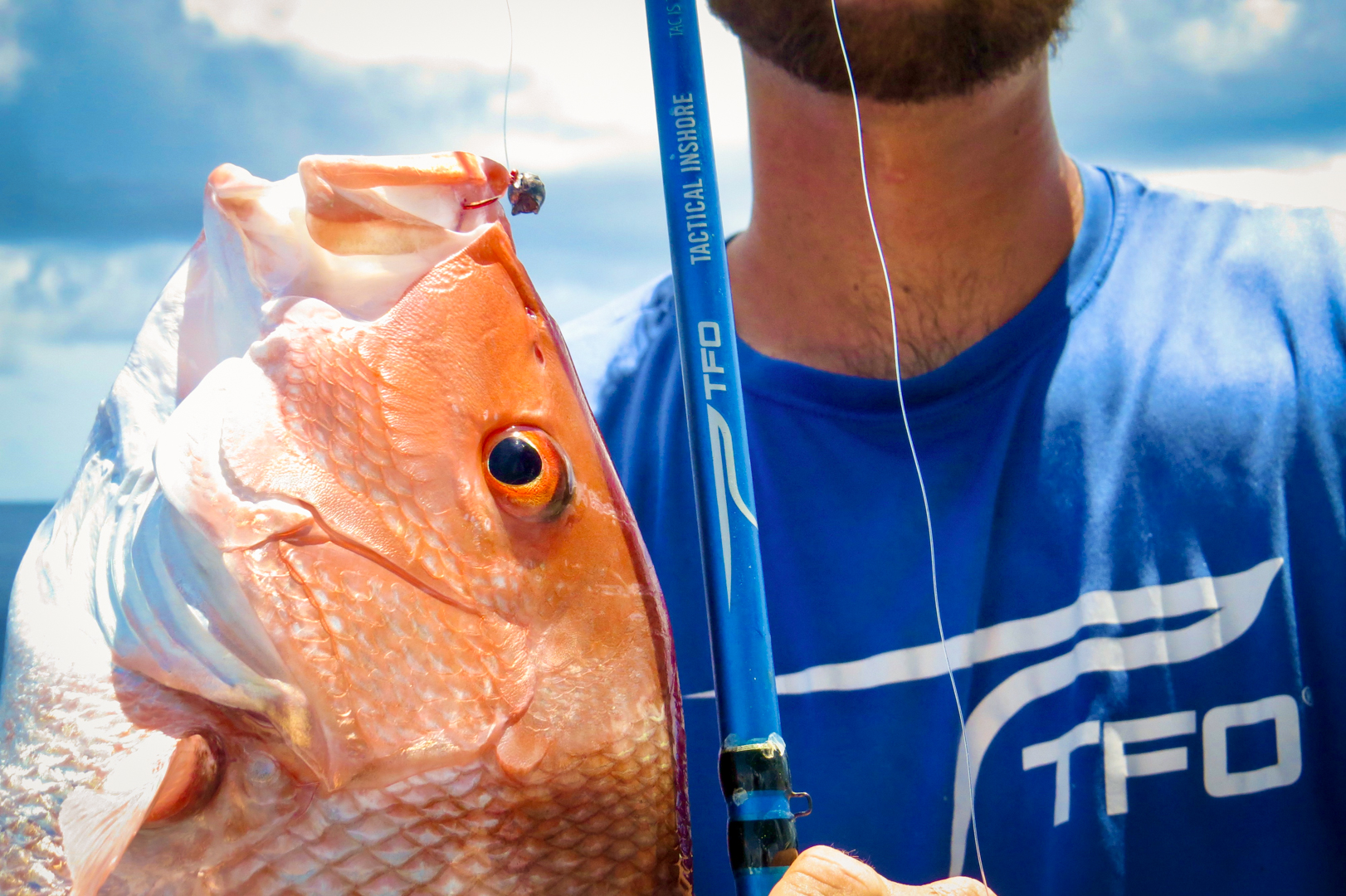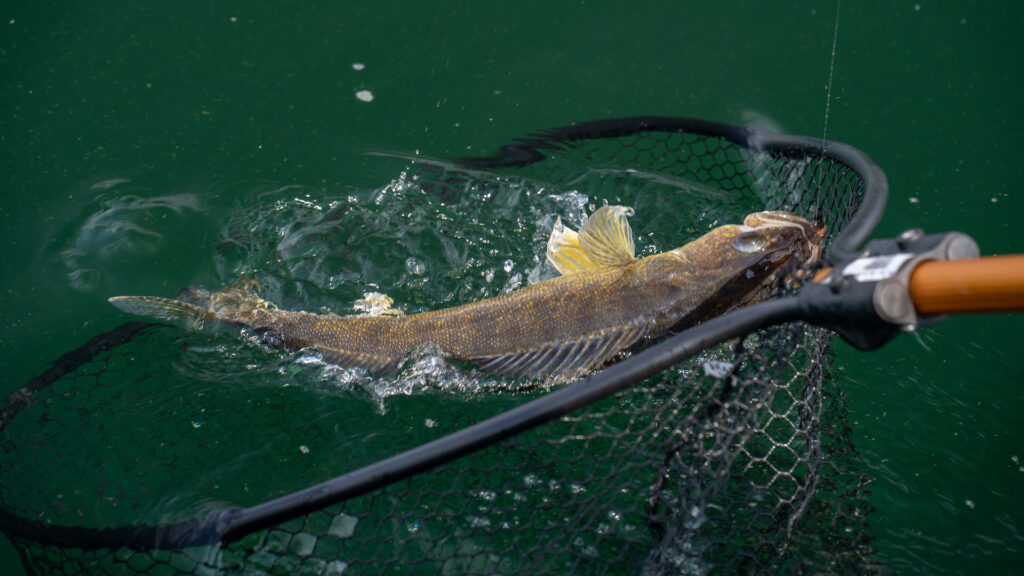It’s no secret that snapper are the tastiest fish in the ocean. In Southwest Florida, our main snapper are Mangrove (Gray), Yellowtail, and American Red Snapper, with the occasional Vermilion and Lane snappers mixed in. Many anglers target snapper with some sort of heavy weighted bottom rig. While this method works, I find the most productive and fun way to catch snapper is to use light tackle – using a light weight or even weightless. Thanks to the fantastic rod technology of the TFO Tactical Inshore series, you can use a lighter rod and still have the backbone to land large snapper or other bycatch with this method, where other rods just can’t compete.

Kelsie putting the Tactical Inshore to work on some Florida snapper. // Photo: Max Moneuse
Even though snapper mostly live near or on the bottom, they tend to feed upward in water column. Chumming will draw them even further from the bottom. While the snapper move upward with the chum and sometimes even to the surface, a basic bottom rig will go right by them.
To get these snapper to eat, you must match the chum. A weightless or slightly weighted small chunk of bait with a long, light fluorocarbon leader will drift naturally with the chum, tricking the chum eating snapper to eat your bait as if it was just another piece of chum. Typically, if I am cutting baitfish for the chum, I will cut a few pieces and throw them into the water along with my bait, so that my bait is drifting exactly with a set of chum. If you are using a chum bag, place your bait near the chum slick coming from the bag and let it continue along with it.
Letting the bait drift as natural as possible with the chum is key! When you put your bait into the water with the chum you are going to let your reel free spool and do not stop your line unless your bait has been eaten or reaches the bottom. As your bait drifts as natural as possible, watch the line coming off your reel, a bite occurs when there is a change of speed in the line exiting your reel or when you feel it jump with rod tip. As soon as you see or feel the bite, flip your bail back, tighten up your line, and set the hook!

Thanks to the fantastic rod technology of the TFO Tactical Inshore series, you can use a lighter rod and still have the backbone to land large snapper or other bycatch with this method, where other rods just can’t compete. // Photo: Max Moneuse
My typical rig for snapper fishing is the 7’ 6” Medium Heavy Tactical Inshore Spinning Rod(TAC IS 765-1) with 20lb braid and a 10-25ft long 16lb fluorocarbon leader with a 2/0 hook. Usually, this setup is weightless, but depending on the situation, I’ll add 1 or 2 #4 size pinch weights. I may fish a lighter or heavier leader or a smaller or bigger hook but I usually don’t fish a leader heavier than 25lb or a hook bigger than a 4/0. With the lighter line and smaller hook typically, you can run into issues when a 30lb grouper eats your bait, but that is where having the rod and reel come into play.
Using the TAC IS 765-1 is perfect for this scenario for its incredible sensitivity to feel even the smallest snapper bites, but it also has the backbone to stop a much larger fish in its tracks. For the reel, you need something that can keep up with the rods’ power. Using a spinning reel with a high gear ratio allows you to stop the fish with the rod and quickly pick the line back up before the fish has a chance to change its direction.

The TAC IS 765-1 is perfect for finesse tactics for snapper because of the rod’s incredible sensitivity to feel even the smallest snapper bites, as well it’s butt section that the backbone to stop a much larger fish in its tracks. // Photo: Max Moneuse
Depth and current are your two biggest factors when deciding to weightless vs adding pinch weights to your setup. In deeper water, even with just a small amount of current, your bait will be more affected by the current than the chum. The current will catch your line, causing your bait to lift out of the chum slick, and drift further back than you intended. It is in this scenario that adding 1 pinch weight makes your bait appear more natural and stay inline with your chum. As you fish deeper water, or feel the current is still too strong, apply additional punch weights as needed. This method of fishing is not only limited to snapper, but is effective for targeting species in all depths, as shallow as 5 ft and as deep as 250 ft plus.

It’s no secret that snapper are the tastiest fish in the ocean. In Southwest Florida, our main snapper are Mangrove (Gray), Yellowtail, and American Red Snapper, with the occasional Vermilion and Lane snappers mixed in. // Photo: Max Moneuse
If you have questions about this method or the proper gear for it, feel free to ask questions and engage with me on Instagram @MaxMoneuse_Fishing or my YouTube channel (@moosejuicefishing).
![]()






